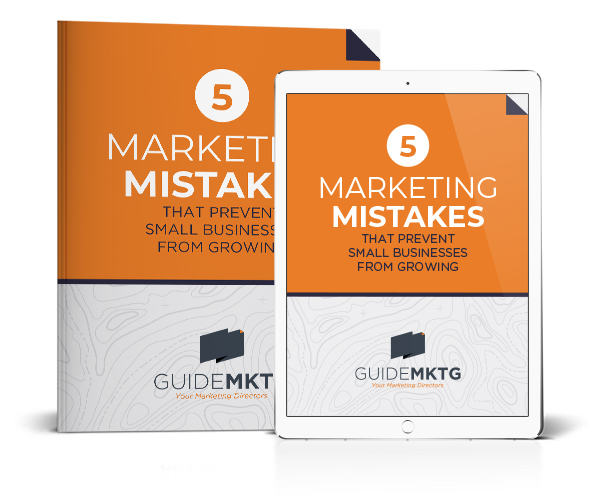Brevity is the linchpin of effective communication. Our attention spans are literally shorter than a goldfish’s. No matter what marketing platform you use, you’ve only got a few seconds to make an impact on potential customers. Here’s how to ditch unnecessary words and unleash the power of brevity in marketing.
Why Brevity Matters
The average American consumes 34 gigabytes of information each day. That is a 350% increase from a few decades ago. No wonder we are all so tired and overwhelmed!
To keep us from an information overload meltdown, our brains expertly sort through all this data in a matter of seconds. On average, people only spend 9 seconds looking at an email or website before deciding if it’s worth their time.
These days, we rarely read full articles. We skim. Some people even listen to podcasts and watch videos at an accelerated speed. Our goal is to get through the information as quickly as possible and move on.
That means, if your content doesn’t catch your ideal client’s attention in an instant, it won’t get their attention at all.
You aren’t just competing with your direct competitors. You are vying against every byte of information out there. Brevity ensures your message isn’t lost in the noise. The fewer words you use, the more weight they carry.
Where to Be Brief in Your Marketing
In almost any form of communication, it’s better to be brief. However, these 5 content marketing touch points require short, compelling communication.
Email Subject Lines
Your email subject line has to pique your client’s curiosity and convey the value of your email in about 40 characters.
The average person gets over 100 emails a day. 35% of people decide which emails to open based solely on the subject line. Your subject line is basically a bite-sized sales pitch convincing your client base to read your email. Data proves that concise subject lines are more effective than longer versions.
So, if you want clients to open your emails, be brief. Every word counts, literally.
Website Headers
Can you explain your entire business model in one sentence? I hope so because that is essentially what goes in the hero section, or main header, of your website.
A website visitor should be able to glance at your site and instantly know:
- What you do
- Why they need it
- How they can get it
If you can effectively convey the importance of your service from the start, you’ll gain a few seconds more of your website visitor’s time. Use an active voice and simple words that capture their attention.
The subsequent website headers should communicate the key points of each section. A potential client needs to be able to skim your website and still walk away with the essential information.
Blog Post Headings
Most of us glance through articles before deciding if we should give it a full read. Clear and concise blog post headings act as signposts, guiding the reader through the content. Each heading should highlight the meaningful value delivered in that section.
Effective headings also help with search engine optimization. Well-crafted headings give your content the opportunity to stand out in this oversaturated digital world.
4 Tips for Concise Copywriting
Now that you know where to be brief, let’s talk about how. Brevity isn’t always about using as few words as possible. It’s about communicating your message clearly. With these four valuable tips, you’ll be able to balance brevity with the power of clarity for optimal results.
Tip 1: Have One Main Point
Identify the main goal for your communication ahead of time. As obvious as that sounds, I’ve read far too many sales emails that doused me with a slew of information I didn’t need. Instead of feeling compelled to buy what they were pitching, I felt confused.
The goal of content marketing isn’t to lay it all out at once. You’re not writing a book. You are laying out a piece of the puzzle. Marketing is the art of leaving a trail of breadcrumbs leading to the next step.
You don’t have to inundate people with information to get them to take action. Make ONE point and tell them what to do next. That’s all they need. Marketing is about long-term relationships. Just ask them to take the next step.
Tip 2: Be Clear
This tip may seem contradictory to the rest of this post but…brevity isn’t always boss. There is one element that is arguably more important than brevity in marketing: clarity.
Think of clarity and brevity as the dynamic duo of communication. Brevity stops the scroll while clarity makes sure the message sticks. If you have to add in a few extra words to make your message clear, do it.
This is where you’ll likely need some outside input to make sure you are striking a good balance between the two. Ask someone who knows very little about your business to review your communication before you send it out.
Marketers and business owners often assume potential clients need more information than they really do. You want just enough information in your content marketing to make your point and not a sentence more.
If your test person thinks something sounds out of place or unnecessary, take it out. Your ideal client doesn’t need to know everything you know before they decide to buy. They just want to know you’ll get the job done.
Tip 3: Use Tools
We all know that using the right words in your marketing campaigns is the key to sales. Yet, not all marketers are writers.
If you need some help learning to be brief, here are a few tools that can help even the worst writers stick to the point:
- Put your text in the Hemingway Editor for recommendations.
- Ask AI to rewrite your copy in a more concise form. (You’ll probably need to take several outputs and cobble together. AI is a tool, not a copywriter.)
- Partner with an editor or professional copywriter.
Marketing is a BIG field. No one marketer can have all the necessary skills to market a business well. Using tools and partnering with others is always necessary for marketing success.
Tip 4: Use Visuals
To outline the details of your offering, use visuals to make the information more digestible. Bullet points and charts are much easier for our brains to process than a big block of text.
You should also choose images that complement and strengthen your copy. It makes your content more visually appealing and allows you to further convey your message without needing more words.
Brevity Brings In Business
Whether you’re crafting an ad or tweaking a sales email, brevity is like a magic elixir for your sales copy. It delights potential clients with its clear, concise explanations. In a matter of seconds, they know exactly what you do, why they should choose your business over your competitors, and how to begin working with you.
Brevity deserves to be at the core of all your communication. Learn to say more with less. Every word—every character—counts.
If you don’t have the time or energy to write concise copy that sells, schedule a call with Guide MKTG. We have a team of talented copywriters who can simplify even the most complex topics.
When we become your marketing partners, we lend you more than just our skills. We let you know which marketing actions will get you the best results so that you’ll never have to feel confused by marketing again. Schedule your clarity call today. It will be brief but our partnership could save you time and money for years to come.





